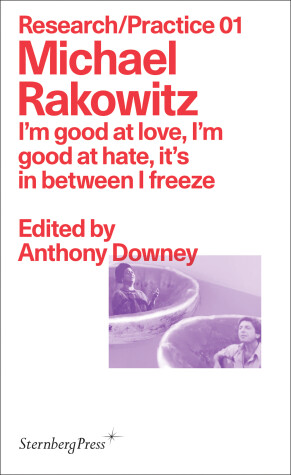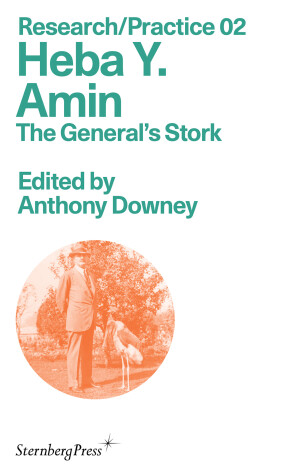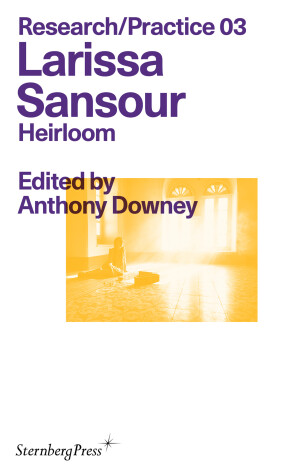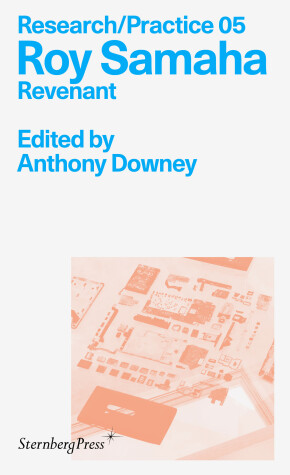Sternberg Press / Research/Practice
5 primary works
Book 1
I`m good at love, I`m good at hate, it`s in between I freeze
by Michael Rakowitz and Anthony Downey
Michael Rakowitz's project I'm good at love, I'm good at hate, it's in between I freeze (2009–ongoing) charts the historical context and aftermath of a concert that never happened. In 2009 Leonard Cohen was scheduled to perform in Israel. Because of increasing pressure from pro-Palestinian voices to dissuade Cohen from performing in Israel, a twin event in Palestine was organized. Amid protests and claims that the latter concert was a token show of solidarity and a hollow attempt to appease demonstrators, the concert was boycotted and eventually canceled. But the story, as Rakowitz's work demonstrates, did not end there. Conjoining the cultural histories of Palestine and Israel with the ethical dilemmas faced by performers under the conditions of a boycott, this volume, the first in the Research/Practice series, brings to light the research that went into this multifaceted work and plots the future arc of its trajectory.
Book 2
Heba Y. Amin's The General's Stork explores historical accounts of biblical prophecies, colonial narratives, and the politics of technological warfare from a bird's eye view. Focusing on how military technologies were developed in the specific context of Middle Eastern geographies, Amin explores the extensive research that went into the development of a multidimensional and ongoing work. She also gives further background as to how, in 2013, the Egyptian authorities sought to detain a migratory stork that it accused of being an international spy.
Book 3
Heirloom documents the development of the artistic research for Palestinian artist Larissa Sansour's project for the Danish Pavilion at the 58th Venice Biennale. It explores how recurrent notions in Sansour's oeuvre, such as memory, trauma, identity, and belonging, intertwine with the discourses of science fiction and environmental disaster narratives. It also explores what it means to produce work from within contested geographies, specifically considering how, through research and the process of production, the artist grapples with complex issues of national representation.
Book 4
The revolutionary protests in Egypt's Tahrir Square in 2011 signified a key event in both world history and the historical development of digital and social media. The digital representations of those events were foundational to the Arab Uprising and gave rise to questions that have become all the more urgent today: How do we understand the role of social media platforms as a means of organizing and effecting political protest? How do we digitally archive historical events for future generations and researchers through such media? And underwriting these questions: what is the relationship between immaterial, digital images and the material realities of lives lived under conditions of emergency?
Conceived by Lara Baladi, Tahrir Archives is an index of images and texts related to her first-hand experience and the ensuing repercussions of Cairo's protests in January 2011. Organized as a means to capture the often transitory digital images that we associate with social networking sites and video-sharing platforms, the project also includes press cuttings, first-hand accounts, blogs, articles, and other associated research. Investigating how digital archiving can produce a partial view of history--if not, more insidiously, an algorithmically curated series of de-contextualized images--this research divulges and explores the implications of online platforms covertly editing and purging images over time. How, this volume asks, will the contemporary political economy of digital image production define our future understanding of political events, social transformations, and protest movements in both regional and global contexts?
Book 5
In June 2014, Roy Samaha embarked on a journey to the Aegean Sea that included a trip to Mytilene on the island of Lesbos. Scouting potential locations for a feature film, he encountered a folkloric tale about revenants and their perceived inability to travel across saltwater. A year later, having since returned to Beirut to continue work on his film, Samaha was confronted with images of refugees' capsized boats and the stories of them drowning in the Mediterranean. Recalling the earlier tale about Lesbos's revenants, Samaha submerged the smartphone that he had used during his trip to Mytilene in saltwater for forty days. As a result, the pictures, videos and messages that were stored in its memory were destroyed. Just as saltwater discouraged the passage of revenants and refugees, it likewise denied access to the images and information previously contained on Samaha's smartphone.
Focusing on the research that emerged from Samaha's initial journey, this volume enquires into how we represent historical events through digital means, especially if those events concern untimely disappearances and ghostly returns. Can the digital as a conduit negotiate the ephemerality or ghostliness of present-day forms of transmigration? What happens when we are left with an object of commemoration that speaks not only of an absence of images but the perennial ineffectiveness of digital technologies in the face of profound loss?




